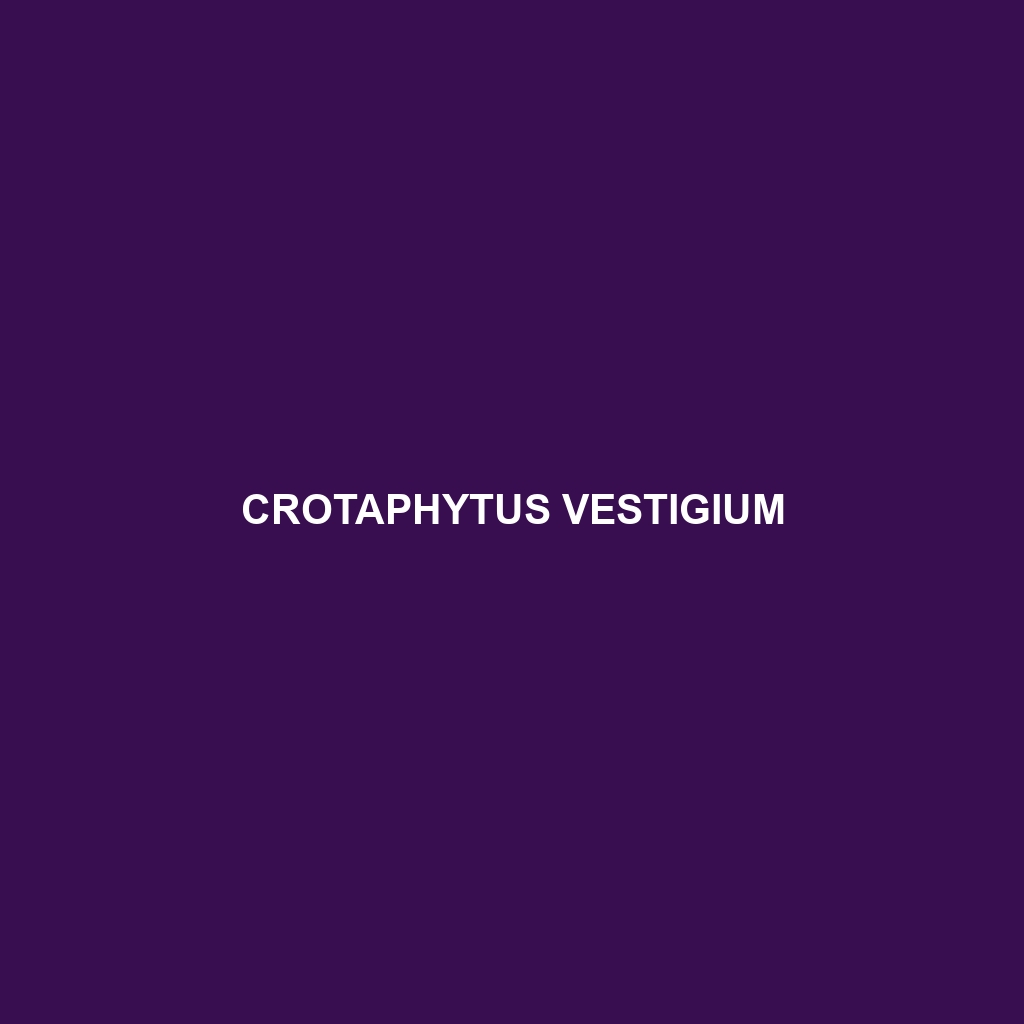Crotaphytus vestigium
Common Name: Crotaphytus vestigium
Scientific Name: Crotaphytus vestigium
Habitat:
Crotaphytus vestigium, commonly known as the Western Collared Lizard, is primarily found in the arid and semi-arid regions of the southwestern United States and northern Mexico. This species thrives in sandy or rocky terrains, often inhabiting open areas such as scrublands, grasslands, and desert environments. They can be observed basking on rocks and sunlit surfaces, crucial for thermoregulation.
Physical Characteristics:
Crotaphytus vestigium typically grows to a length of 5 to 10 inches. The coloration is a striking mix of bright green to bluish tones, with distinct black bars or ‘collars’ around their necks, which gives them their name. Their elongated bodies are supported by sturdy limbs, making them agile and adept at climbing. The species features a flattened head and a robust tail, which is often banded, enhancing their camouflage against natural habitats.
Behavior:
This species is diurnal, meaning Crotaphytus vestigium is primarily active during the day. They are known for their quick and agile movements, often seen darting between rocks and vegetation to evade predators. Social interactions include territorial displays, where males may engage in push-up displays to attract females and assert dominance. Additionally, their basking behavior is vital for regulating body temperature, especially in the harsh environments they inhabit.
Diet:
Crotaphytus vestigium is an opportunistic carnivore, primarily feeding on a diverse diet that includes insects, small mammals, and other lizards. Their dietary habits play a critical role in controlling insect populations, making them essential for maintaining ecological balance. They hunt actively, using their speed and agility to catch prey, often foraging alone or within small groups.
Reproduction:
The breeding season for Crotaphytus vestigium typically occurs in late spring to early summer. Males engage in elaborate courtship displays to attract females. After mating, females lay 2 to 10 eggs in warm, sandy soils, where they incubate for several weeks before hatching. Hatchlings are independent from birth and quickly adapt to their environments, showcasing the resilience of the species.
Conservation Status:
Currently, Crotaphytus vestigium is classified as Least Concern on the IUCN Red List. While there are no immediate threats to their population, habitat destruction and climate change pose potential risks in the long term. Conservation efforts focus on preserving natural habitats and promoting awareness to ensure the sustainability of this species.
Interesting Facts:
One of the most fascinating aspects of Crotaphytus vestigium is its ability to change color depending on environmental conditions. This not only aids in camouflage but also plays a role in temperature regulation. Additionally, these lizards have remarkable eyesight, allowing them to spot predators from a distance, adding to their survival strategies.
Role in Ecosystem:
Crotaphytus vestigium plays a vital role in its ecosystem as both a predator and prey. By controlling insect populations, they contribute to the overall health of their environment. Their presence also supports a food web, as they serve as prey for larger predators, such as birds of prey and snakes, thus maintaining the balance within their ecological community.
